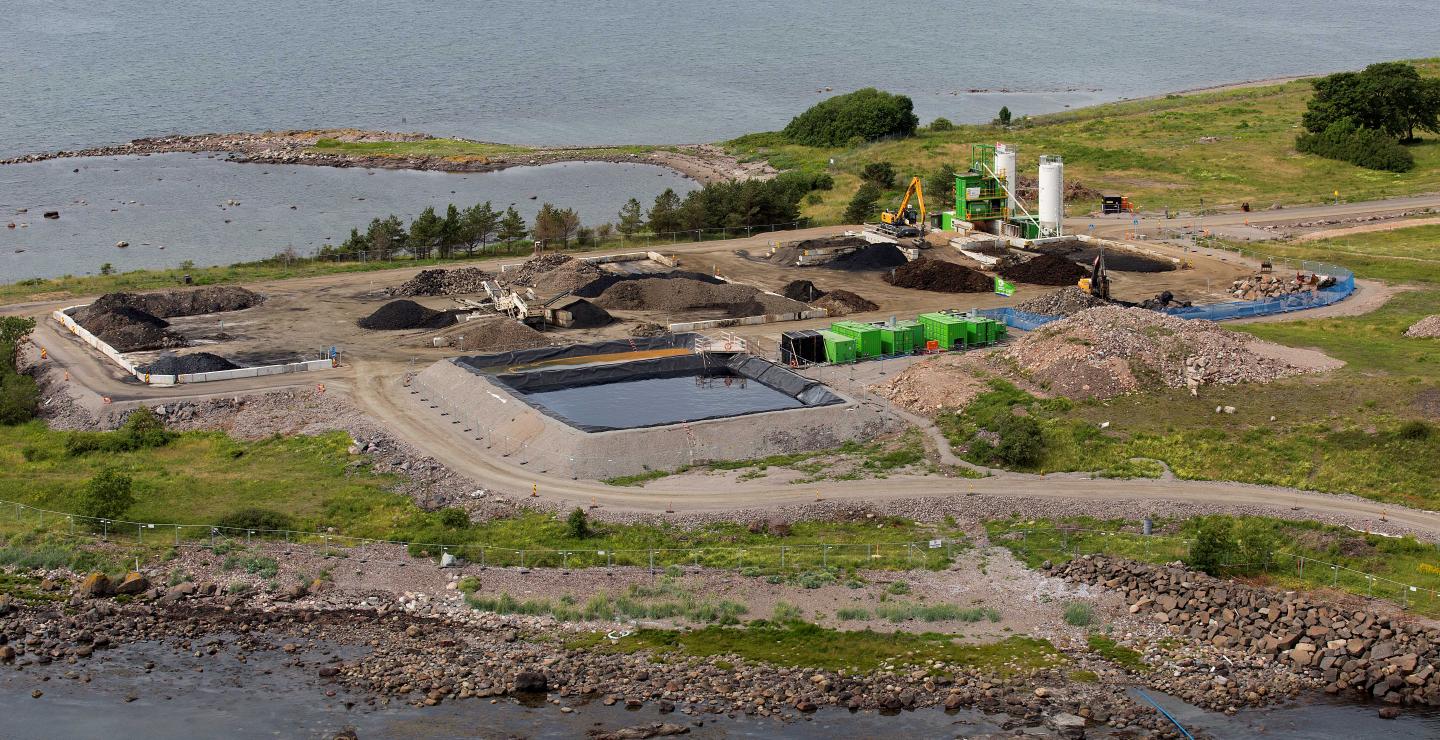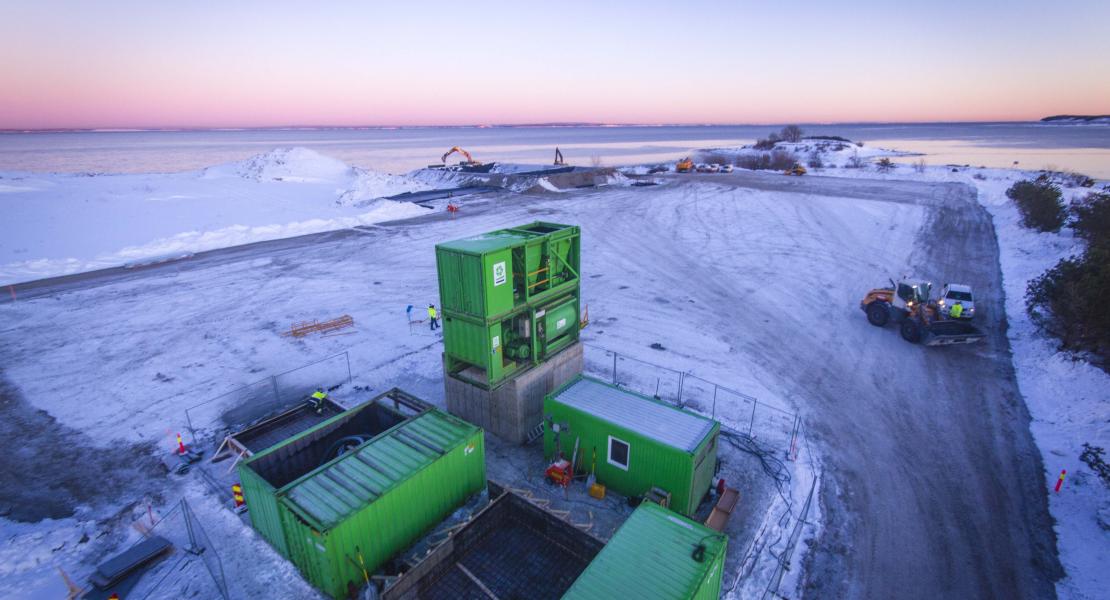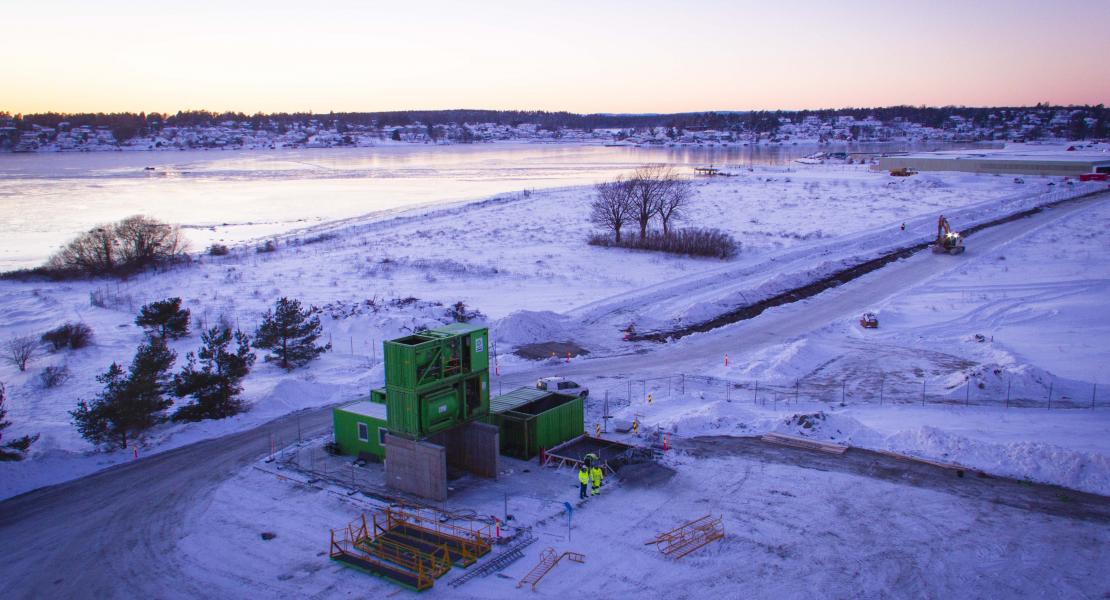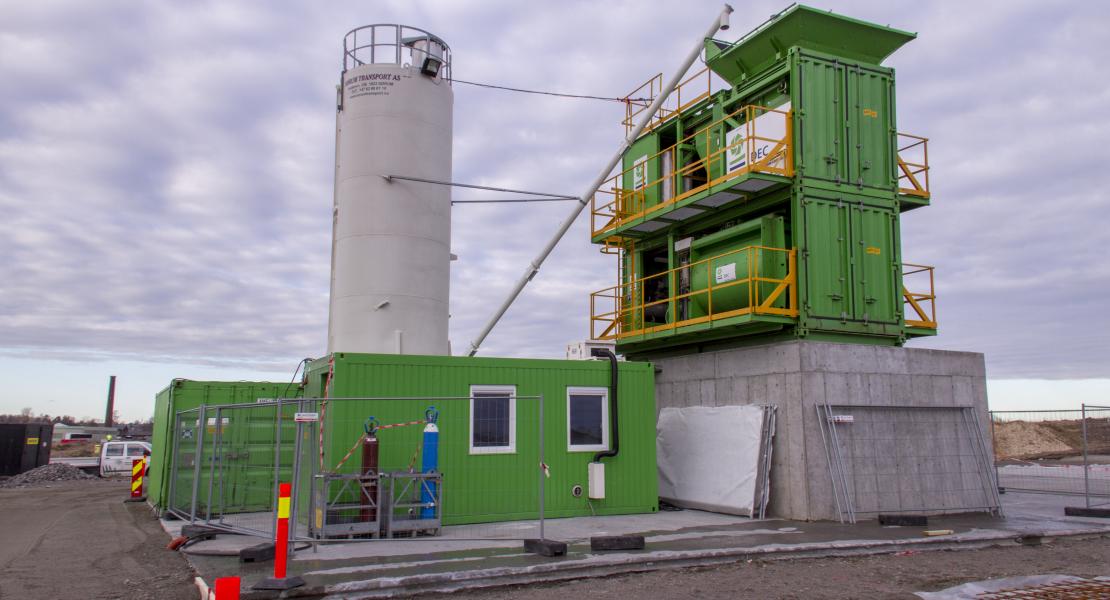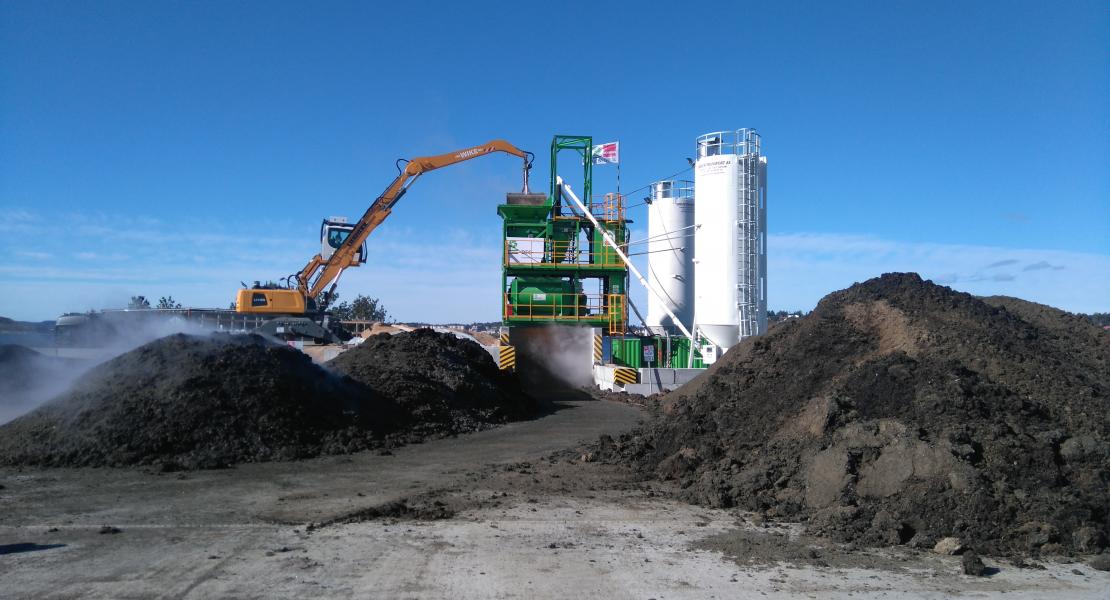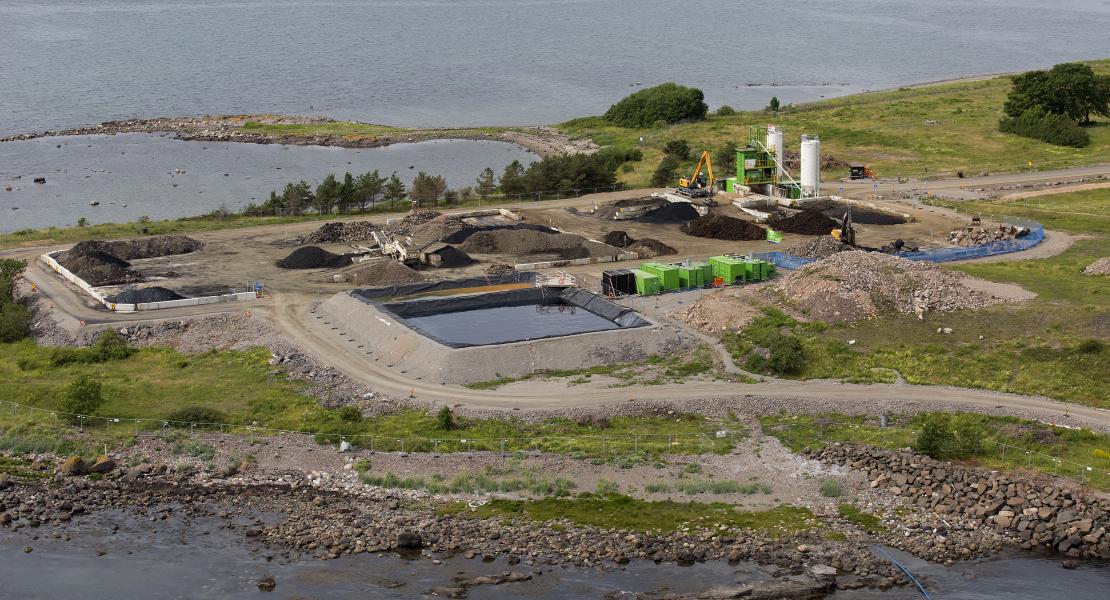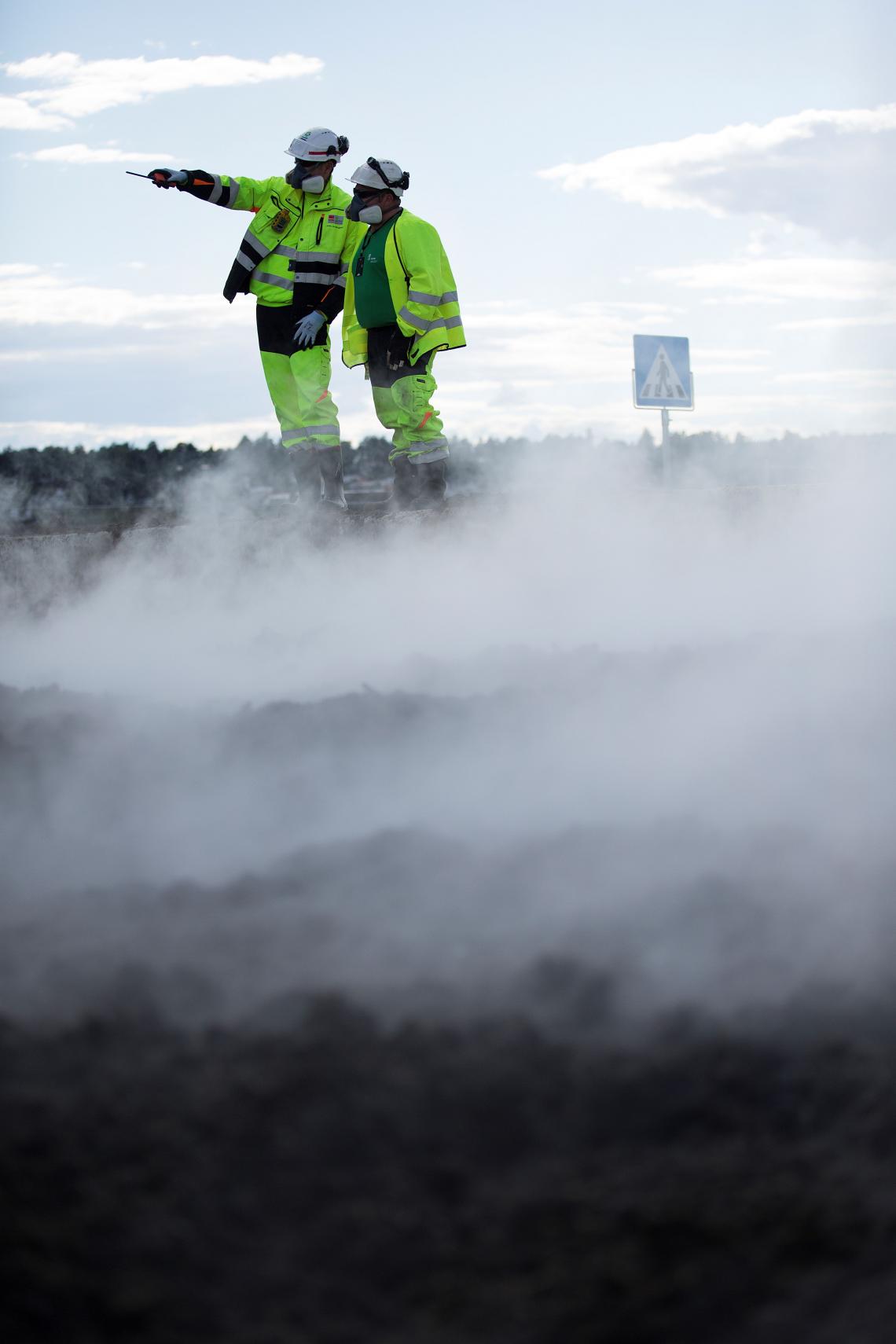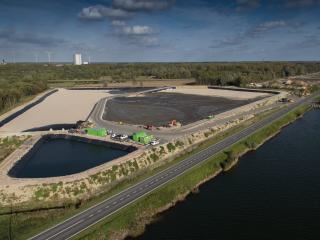Second World War and rebuilt in the early 1950s. With the exception of the former administration building and warehouse, all refinery-related structures were demolished and oil-related activities at the site were discontinued by 2001.
Following the closure of the refinery, cleaning and demolition works took place, after which the site was thoroughly investigated and widespread soil contamination was discovered which needed to be remediated.
Various fuels and petroleum-related products were produced during the refinery operations, including (but not limited to) transformer and lube oils. These oils were produced through vacuum distillation and cleaned via acid treatment and filtration. The production process resulted in waste materials such as acid tar and Fuller’s Earth being found within the eastern portion of the site (eastern coast of the Vallø peninsula, facing Oslo fjord). Remediation was required to comply with the ‘Miljødirektoratet’ (Norwegian Environment Agency) criteria, whereby the land has to be suitable for commercial and residential use.
